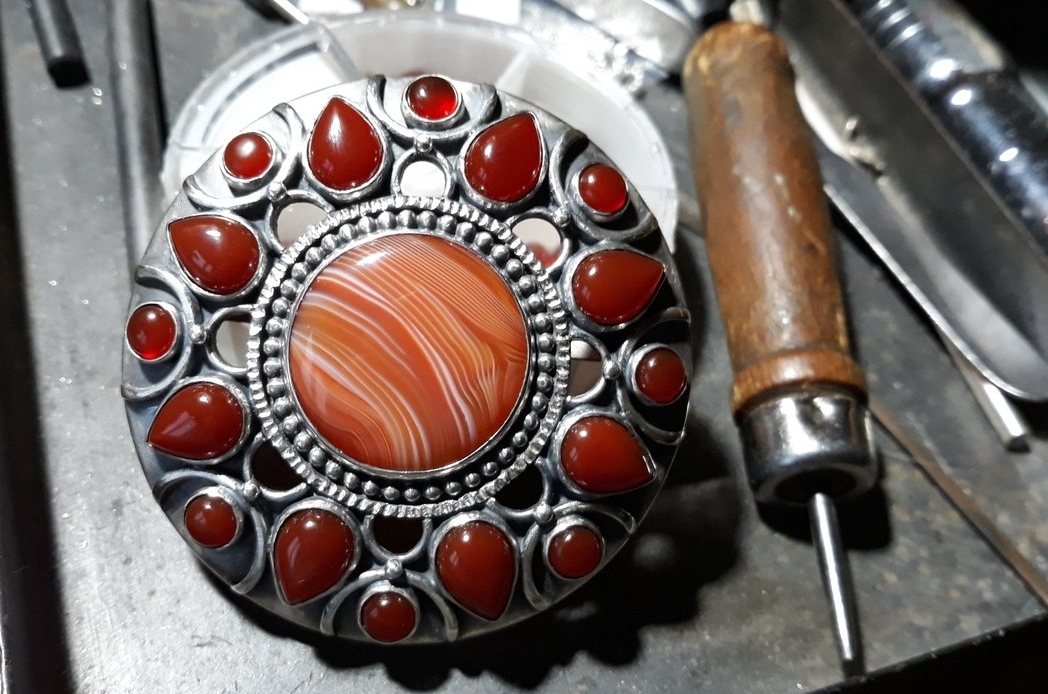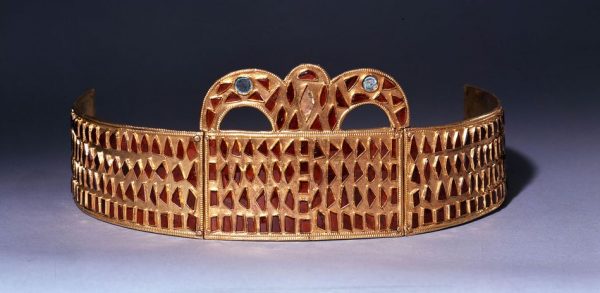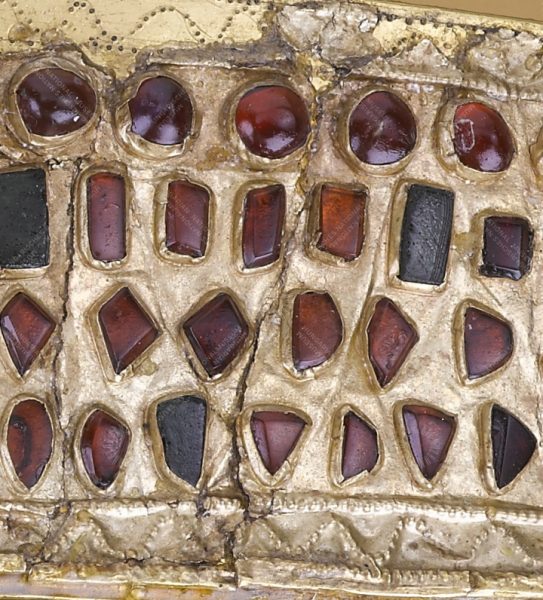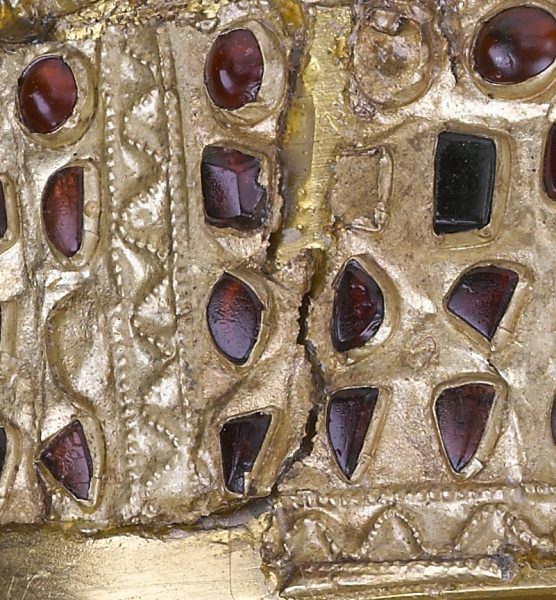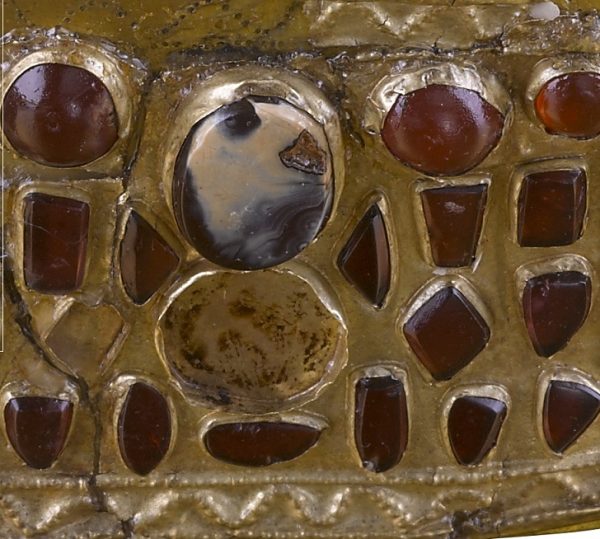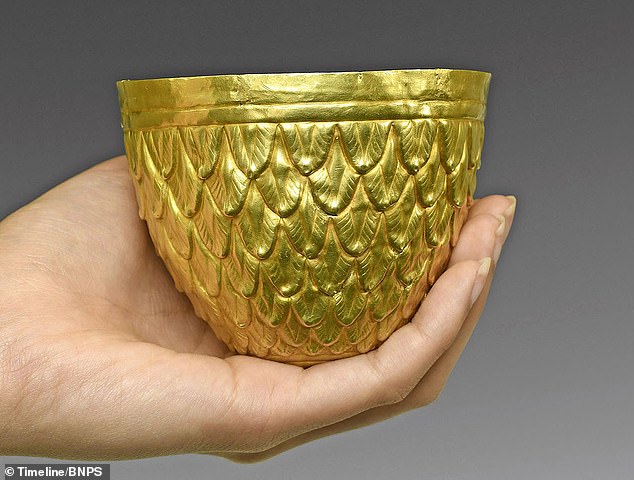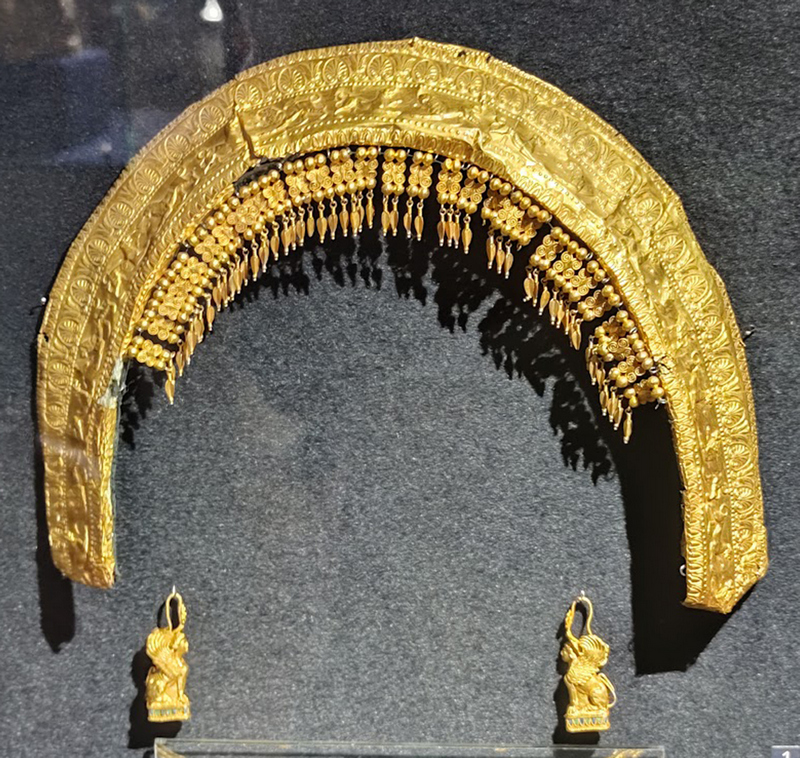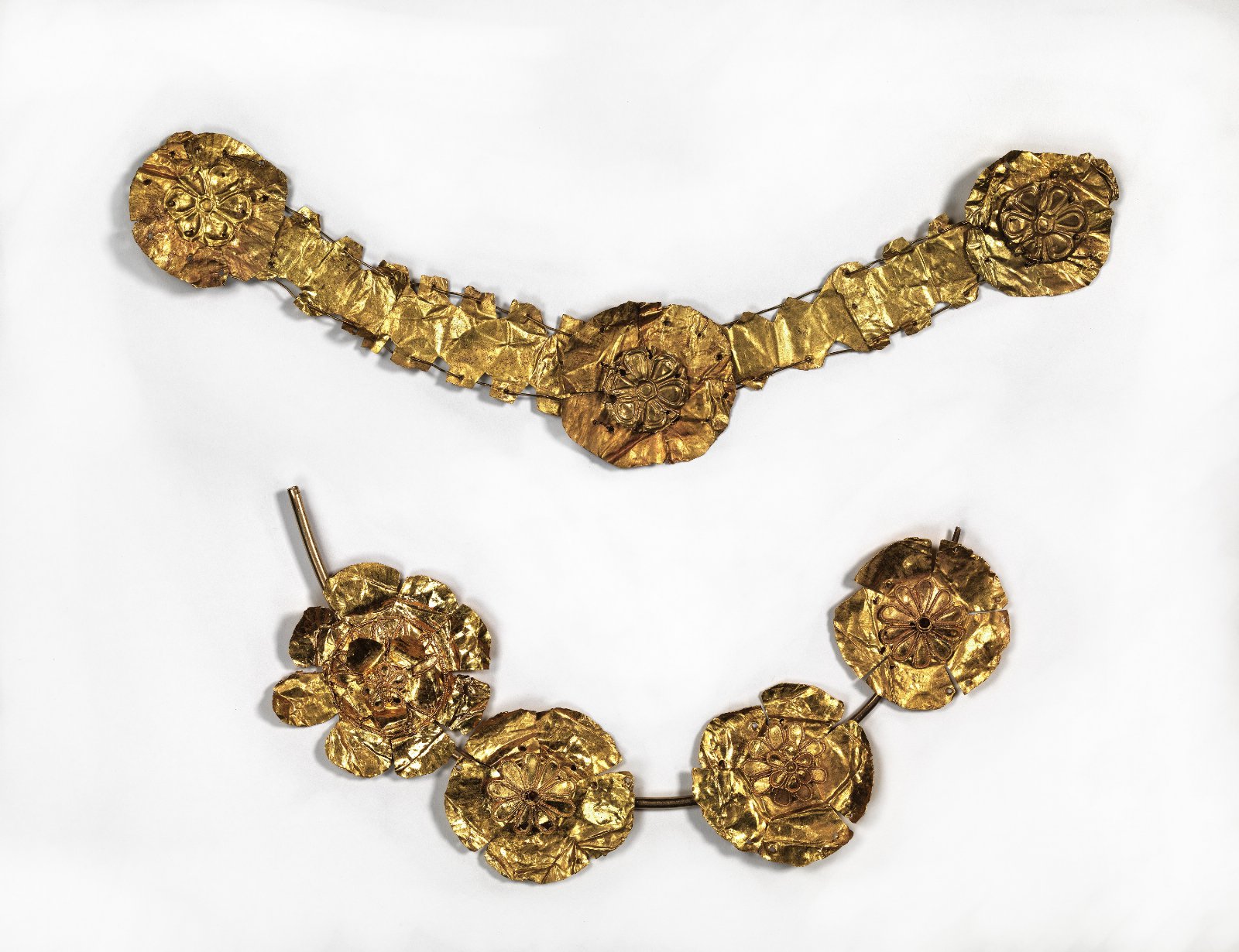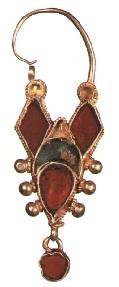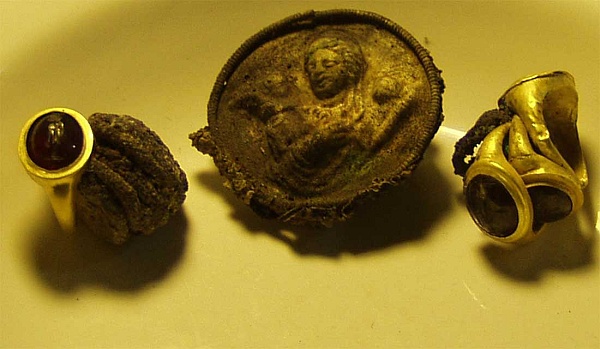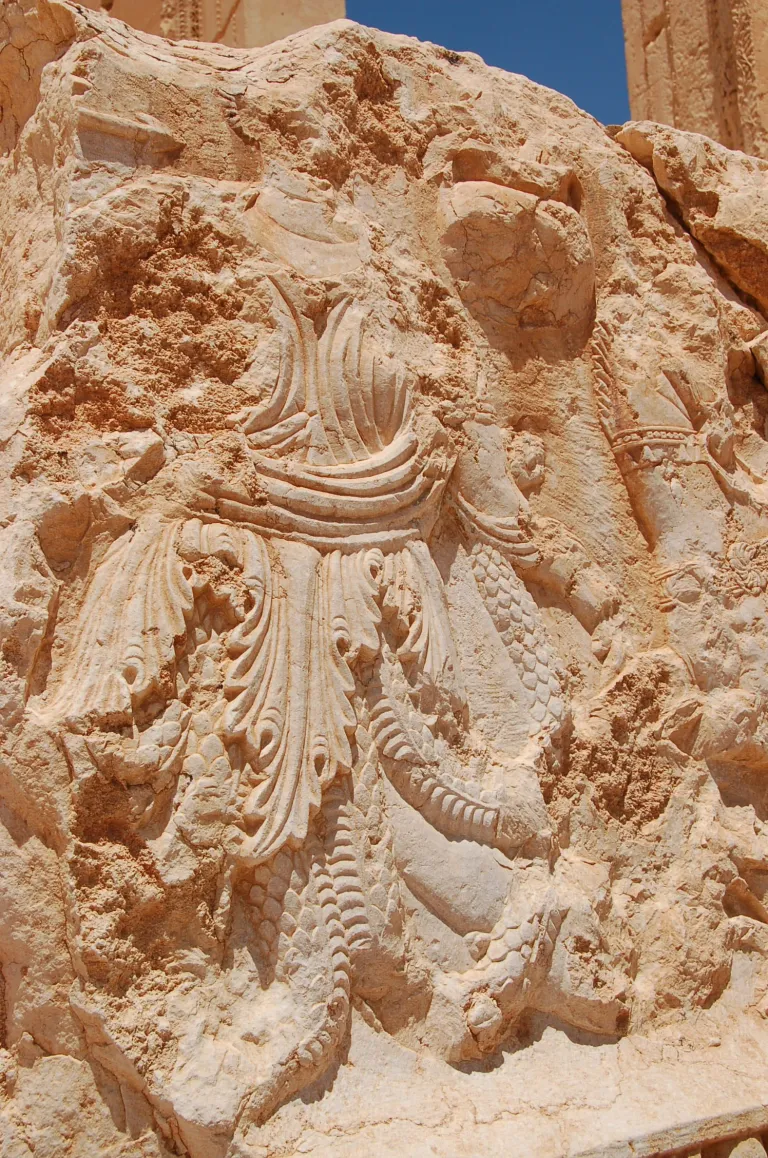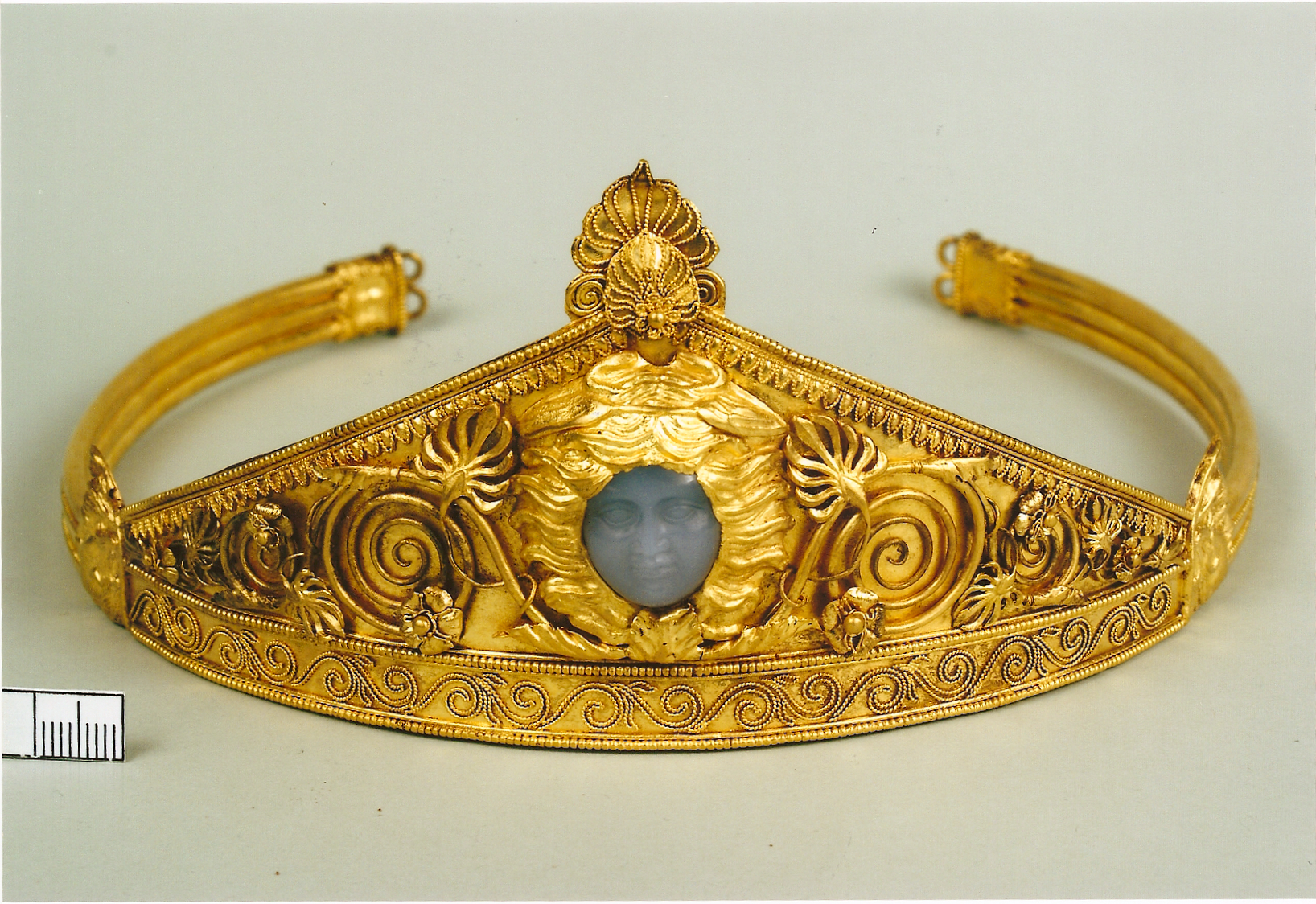The ‘Crown of Kerch’. This diadem of a noble lady was discovered in a Migration-period tomb in Kerch, in the ancient city of Panticapaeum, Crimea. Made of gold is inlayed with garnets. Late 4th – first half of 5th century.

Hunnic diadem of a woman, from Tylihul, Odessa region, Ukraine. Golden leaf, garnets.
Römisch-Germanisches Museum in Cologne

Hun period diadem made from golden sheet with garnet, cornelian, glass and amber inlays. Found in the female grave at Csorna, it is dated to the first half of the 5th century. The Csornai diadem originally consisted of a thin gold plate attached to a thicker bronze plate. The strap, which widened slightly in the middle, was open, presumably sewn to a stiffened headgear made of organic material. The gold plate covering the strap was attached to the bronze base plate by folding back the edges of the gold plate on the back. Originally there were 149 stone or glass inlays.
Hungarian National Museum, Budapest, Inv.no.: MNM 55.36.1.

Hunnic diadem from the burial near the village Stara Ihren, Dnipropetrovsk region, Ukraine. Excavations in 1959
Made of gold with carnelian is dated to the 4th-5th century.
Kept in the Treasury of the National Museum of History of Ukraine [link]
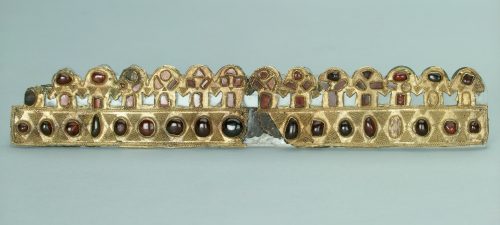
Hunnic diadem, gold on the bronze core, inlaid with garnets. Length 24 cm
Culture of the nomads of Southern Russian Steppes. Late 4th – early 5th century.
Found: Russia, Volgograd region, Verkhne-Yablochny Farm, near Verkhne-Kurtoyarskaya Stanitsa

Two zoomorphic pieces of jewelry, decorated with carnelian and small pellets of gold, Black Sea region, 4th/5th century.
- http://real.mtak.hu/39920/1/R%C3%A1cz-Szenthe_A%20hun%20kor.pdf
- Migration Period between Odra and Vistula http://www.mpov.uw.edu.pl/en/thesaurus/tribes-and-peoples/huns-
- https://zen.yandex.ru/media/historyrus/mogila-attily-kagana-gunnov-5e6225e6ddf4d511a2fadedb
- https://streetart-ekb.livejournal.com/641913.html
